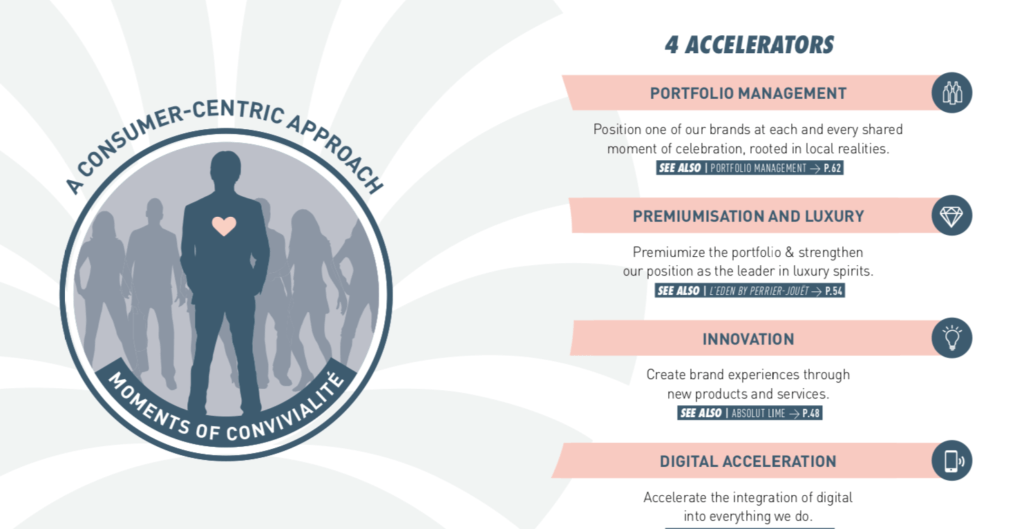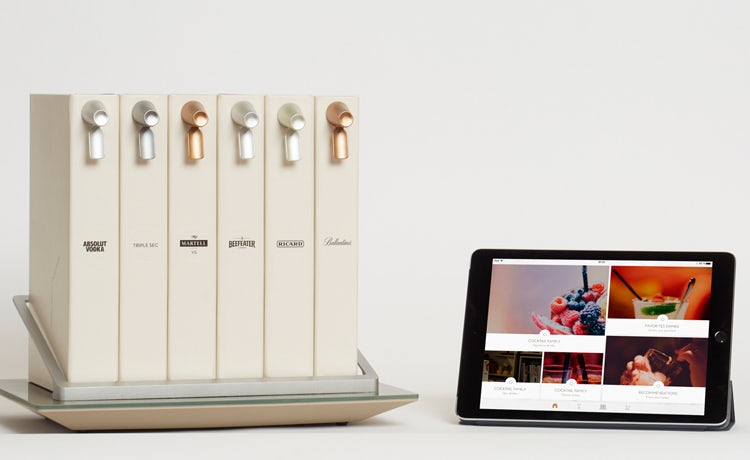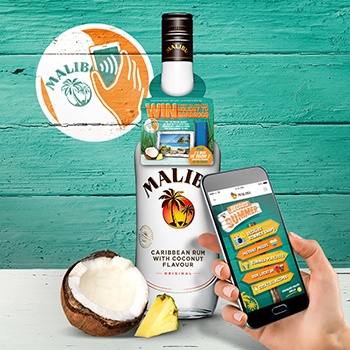Pernod Ricard: digitalizing the world of premium drinks

This post explores how the second largest spirits company in the world embraces digital transformation and technology era to build closer ties with its customers.
Pernod Ricard is a French spirits company that was founded 43 years ago by Paul Ricard and has such famous brands in its portfolio like Chivas Regal, Absolut, Jameson, Perrier-Jouët and Malibu. Pernod Ricard has a presence in over 86 countries, it is still managed by members of Pernod and Ricard families and had annual sales of $11.08 bn in 2017.
Company’s organizational structure is decentralized, with the market companies and brand companies connected through the headquarters in Paris.
The company has been putting a lot of efforts to make its marketing strategy more responsive to the consumer needs in an increasingly digital environment, with the new generation of digital-first millennials joining its clientele. Digital acceleration focusing on the consumer-centric approach is among its 4 key pillars of growth.
Company has been addressing digital transformation in its marketing operations through digital advertising and Internet of Things (IoT).
- Digital advertising
As many other consumer goods companies, Pernod Ricard realized the power of using real time data to improve its advertising campaigns, as well as using mobile-first approach to geolocate the customer and provide more personalized experience through mobile apps.
The company has continuously increased the share of digital advertising in its media spend, reaching 40% in 2017 (from 25% in 2015). Having real time data insight helped the company to change the way it builds ad campaigns. Historically, advertising campaigns were static – not analyzed until the end of their duration and hence could not be optimized simultaneously. With digital advertising, Pernod Ricard has embraced a completely opposite approach to running its campaigns: close monitoring is carried out every day of the campaign with the opportunity to refine it by retargeting customers’ profiles, changing the message and running A/B testing non-stop, allowing for much more efficient campaign. Budget allocated to one audience or another, one digital platform or another can also be adjusted daily if not hourly, making ad spend more effective. Pernod Ricard open and collaborative culture has been a great facilitator of such transformation internally.
To help its marketeers around the world embrace shift to digital, Pernod Ricard has also established a Global Media Hub, which has been working closely with the market and brand companies and developed in-house digital tools and resources for them. Global Media Hub relies on data analysis of all running digital and social media campaigns to provide suggestions and improvements, as well as sharing best practices with all the affiliates within the organization. It has implemented a programmatic (automatic) approach to purchasing digital advertising, which relies on real-time data. Such transformation helped to shift to performance-driven metrics, improving company’s strategy and operations alignment.
- IoT
Pernod Ricard has also started exploring IoT to improve consumer engagement, especially at home (as the company calls it, a hometainment). One of the IoT experiments orchestrated by the company’s Breakthrough Innovation Group (BIG) is OPN – first connected drinks library, which was officially announced at the Consumer Electronics Show 2017 in Las Vegas. OPN offers a new and engaging way to make cocktails and enjoy spirits at home – and you can control it with a mobile app.
OPN is an elegantly designed collection of cartridges placed on a tech-smart tray that contain Pernod Ricard spirits. Tray has an ability to track remaining levels of liquid and notify OPN system via the app (or a website) about the new orders as well as adjust cocktail recommendations based on what’s available. OPN app relies on a catalogue of over 300 cocktails and offers a simple and visual guide for the user. Each cartridge is 25 oz, just like a bottle of spirit, but is designed to fit any interior seamlessly. Each cartridge is an independent part and can be substituted with any spirit (or wine). Finally, the system arranges a shopping list for its user based on the cocktail preferences alongside with the refill orders. Initially launched as a beta version in 2014, the OPN digital bar should be available for purchase in the end of 2018 and the company promises 30-60 minutes delivery of the refill cartridges.
Pernod Ricard has also monitored how consumer’s house has been evolving with the new wave of IoT devices and launched “What cocktail” skill on Amazon Show (for now in the UK only) to provide a voice-operated visual cocktail guide.
Finally, the company has experimented a lot with connecting the packaging to the consumer and making it more informative and fun. For example, it developed a special NFC-enabled Malibu bottle that can be used with a NFC-reading app and offers to unlock Malibu feature music, win prizes and learn about new cocktails. NFC packaging helps build loyalty and increase interaction with the brand at home. In a similar manner, Ballantine’s launched its connected bottle last year. Ballantine’s Lumen can project video, text or image sent from a smart phone app connected via Bluetooth.
Some of these experiments are pure PR-moves, but some are consistent attempts to keep in touch with the younger consumer and adapt to the changing reality of human interaction.
- Challenges and tensions
There are several challenges facing Pernod Ricard on its way to digital transformation.
- Designed to drive fast decision-making and agility, group’s decentralized organizational structure can become an obstacle to implement digital changes. Each market company is set to launch its own activations, which are not necessarily shared with the group to learn from the best practices (unless they are very large). Additionally, launching digital transformation separately by different market and brand companies (Malibu and Ballantine’s connected bottles were developed separately by two brand companies) results in higher cost. It would be more effective to focus on several large projects centrally and drive their activation by market companies once ready. This could give stronger negotiating power to the central office and reduce costs. We have seen this being attempted with introduction of BIG and Global Media Hub, but there is no consistency and the number of projects developed by many different parties keep ballooning.
- Slow pace relative to the market. It took BIG 3 years to confirm the launch of OPN, which is incredibly slow comparing to technology development and fast shift in user preferences. Similarly to the place of VnS within Havas, BIG does not have either a clear communication with the rest of the company or the power to influence market companies decisions to launch its projects. Instead of being kept aside, BIG needs to be closely integrated with the rest of the company, increase visibility and communication about its projects and secure support of the headquarters to ensure fast-track approval and global launch.
- Projects like OPN pose larger questions about the operating model of the company. By introducing delivery services with OPN, Pernod Ricard needs to make logistic decisions about providing such services, which are out of its capacity right now. Does it mean additional burden on the local distribution partners and if so, at which cost? Or does it suggest creating a delivery unit within many market companies? In case of the latter, is the holding willing to adjust its business model and does it have ability to drive economies of scale in a relatively niche premium spirits market?
Sources:
- https://www.pernod-ricard.com/en/media/publications/annual-report-20162017/
- https://www.marketingweek.com/2017/01/06/pernod-ricard-connected-cocktail-library/
- https://www.thedrinksbusiness.com/2017/12/pernod-ups-digital-marketing-with-amazon-show/
- https://lovelymobile.news/malibu-because-summer-campaign-launches-connected-bottle-trial-in-amsterdam/







Thanks for this interesting post, Iryna! I wonder if Pernod has considered building out another version of the OPN platform to accommodate a full bar’s worth of liquor and spirits. There could be an opportunity to partner with bars and restaurants by selling a commercial-grade variant of the OPN to them; this could help the bars cut personnel and liquor costs by reducing time to mix drinks, track bottle usage, and prevent waste. Cocktail menus could be expanded, as bartenders could quickly refer to instructions on the app if they get in a jam. These systems could track and transmit data on drink dispensing and consumption back to Pernod, which could help them conduct more targeted marketing.
Great post Iryna. The 3 years to market for OPN is very surprising. I wonder what organizational / structural changes Pernod has had to make in its shift to digital. How are they finding and then integrating digital talent into their org? It seems like a company with such history and success like Pernod might have many legacy departments and “old guard” execs who might not understand the shifts in consumer tastes (especially given the speed of change) and thus not relate to how younger generations consume content and buy products. Are there other spirits companies who have successfully transitioned to a full-on digital platform and the associated marketing / products?
Thanks for an interesting read, Iryna! I wonder whether the IoT application is, as you mention, purely a PR move. As Chris mentioned, it seems that the real value would only come from improving efficiencies in the bar segment, which could actually be monetized in the long run as the value proposition is clear for bar owners (fewer bartenders, no procurement/logistics headaches). They could even frame it as a PRaaS (Pernot Ricard as a service?). Alternatively some other startups such as Kuvee are trying to figure out how to apply technology to bottles to conserve their freshness (maybe worth it for some of the Perrier Jouet Belle Epoque bottles?) and transform it into an interactive WiFi-enabled display for the customer.
Thank you for the post Iryna! It was very interesting to read about how a spirits’ company is tackling digital transformation.
I was intrigued by the fact that the company is still managed by members of the founding families. Although this usually means that people may be set in traditional ways, I wonder if it also means they are able to take more risks and make faster decisions if they have a controlling stake. As you mention, many of their moves towards digital seem like PR moves to engage a younger audience, and I wonder if this is a reflection of how the company as a whole is thinking of digital. Are they only using digital in their costumer facing activities, or will they truly use the data internally to improve the customer experience?
Such an interesting post! I wonder if they will face the same fate as the company in one of your previous posts that had a similar product for juice where people realize its not that hard to simply make their own cocktails. One big value add here is that you can make hundreds of cocktails, however, the average person has their favorite one or two drinks so the option to make 300 might not be so attractive after all. I completely agree with Chris here and think they should consider a commercial version. Perhaps it can save bar tenders time in making drinks or allow for self service. I could also see companies purchasing it for their office happy hours for example.
Thanks, Iryna. You bring up an interesting point about how organizational structure (decentralized/centralized) can impact implementation of digitization strategies. Given the relative novelty of digital impact on business models, I think many organizations will continue to struggle in their consideration of organizational structures moving forward. For digital initiatives to truly make an impact, the digital mindset must be integrated within business units; having a separate “digital” department won’t develop the skills or understanding to best impact the business.
Thanks for this great post, Iryna! Really interesting and a look into a world that I did not know anything about. The ‘hometertainment’ IoT cocktail service is so interesting and quite clever because I believe that that has been implemented in many clubs and bars throughout at least Europe, and maybe the US, for several years now as a way for the managers to track how much alcohol is being used, manage inventory levels, and to prevent bartenders from giving free drinks. It is a clever application of an existing B2B technology to transition it to a B2C model and for the company to be able to create and to capture value on the B2C side with it. I agree with your cautionary point, however, that in order to be successful, the company will likely need to be able to innovate and to release new products and software updates more quickly.
Great post! I’m very glad to see PR’s moving towards more digital now since PR used to be my client when I worked in a consulting firm. However, I still want to question the value of OPN that you introduced above. Although it is using a very attractive concept of IoT, I wonder if the bartenders are going to use it since most of them treat cocktail receipts as an art, instead of a quantifiable formula. Also it’s hard for me to imagine ordinary consumers buying it at home, since most people don’t have such professional needs when they just want to indulge a bit at home. So, what is the exact position of OPN?
Love to see a post about the CPG space. The post focused a lot on consumer facing digital initiatives, but I wonder if there is something to be said for digital innovation on the distribution partner side. Using data, either from the creation of smart bottles or owned and operated dispensers (like an OPN for bars), could the company better model demand for its various products? This is also a way to create rich consumer data, which may inform them on future product iterations and even new product launches.
First, I would totally buy a Tray for events and parties. Secondly, it is interesting to think about how a CPG company utilizes digital technologies when their products are by nature not technologies. The A/B ad testing seems like a mechanism that allows the company to more closely monitor its marketing spend, but it does not fundamentally change the way a consumer interacts with the product. The tray is interesting to me because Pernod Ricard is actually attempting to use digital technologies to foster a new product and behavior change (now anyone can be a mixologist and fancy bartender). I agree it will be interesting to see how the company handles the logistical challenges of the refills for the system.
Thank you for the post, Iryna. I find the concept of OPN to be fascinating. It reminds me of a consumer version of the Coke Freestyle machines that are installed in restaurants. These machines have the ability to automatically reorder necessary inputs (http://www.me.gatech.edu/featured_ccfreestyle) without any manual intervention creating tremendous value for business owners. It will be interesting to see if this model is as valuable to consumers.
Fascinating post! I, too, am really interested in the OPN product and how it provides customized recommendations to users about what drinks they may like, etc. It’s unusual for people to make a cocktail more complicated than a G&T at home, but it seems like the OPN, as it evolves, could make those cocktails much more accessible. A gamechanger for entertaining at home! It’s great to see how the company is using digital from a marketing perspective, but I wonder how PR could better use digital technologies to improve its supply chain and operations. Beverage companies like these have vast and complicated supply chains and distribution networks, and digital tools could likely enhance this experience for the company and partners. Looking forward to seeing whether the OPN achieves some scale and starts to appear in peoples’ homes!
Thanks for the post! I think it is important to attract the younger millennials who will be the main drivers of alcohol consumption in the future. I would be curious to see how their engagement has changed with the existing customer base (who may be older). Does this type of packaging and marketing appeal to them? Will this initiative attract one group but deter another?
Iryna, great post! Interesting to think about how an alcohol company should think about digitization. One quick thought – How does Pernod Ricard think about how digitization impacts their distribution channel? With new companies popping up like Drizly to deliver alcohol or cocktail boxes that have alcohol included. As much as these start-ups probably seem small in the scale of the company, it is probably really important that they experiment in working with this new D2C type platforms to ensure that they aren’t left behind.
wonderful post. Thank you for sharing.